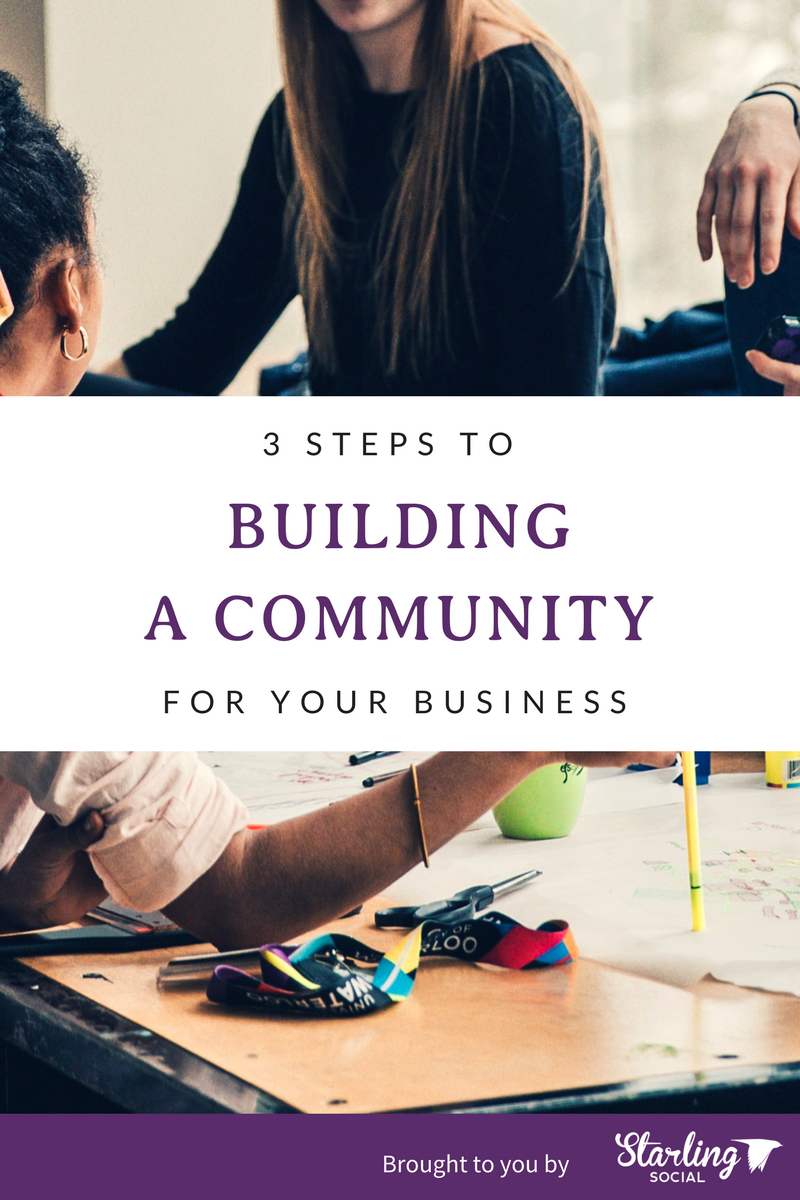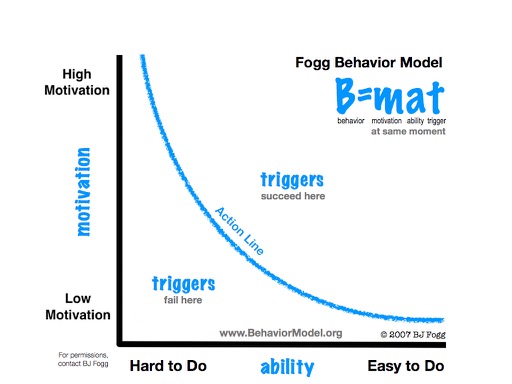Tagged: B2C
The 4 Key Website Marketing Metrics You Need To Track
- by Alyson Shane
One of the critical components involved in understanding how your marketing efforts are translating into real-world actions is connecting your website with your marketing campaigns.
When you understand how the actions you're taking online: organic social media engagement, sharing blog content, hosting events and webinars, and running targeted paid advertising campaigns all connect to actions visitors take (or should be taking) on your website, you can begin to understand how and why (or why not) your efforts are yielding the results you need to grow your business.
This blog post will cover some of the key marketing metrics for planning and increasing the Return on Investment (ROI) of your digital marketing efforts of through your website.
Let's get started, shall we?

1. Website Visitors
Understanding who is arriving at your website is almost as important as what they do when they get there. Take a glance at the following areas for a deeper understanding of who's visiting your website:
Audience Analysis
Analyzing the age, gender, language, and location and comparing your findings to your Buyer Profiles or Ideal Customer Profiles (ICPs) will let you know right away if your efforts are sending the right kinds of people to your website.
For example, if your ICP for your monthly men's shaving kits are men age 20 - 45 with who live in the Baltimore, MA area and make more than $45,000/yr, and your web traffic is comprised primarily of men age 18 - 24 who live in the Baltimore, MA area and make less than $30,000/yr, then you need to rethink your messaging and paid ad targeting.
Additionally, if the majority of your web traffic is coming from a different target location then you may need to re-think your targeting parameters and re-evaluate your hashtag strategy.
Devices, Tech + Interests
Understanding the tech your visitors are using to view your site plays an important role in how long they stay on your page. According to HubSpot, Google drives 95% of all paid search ad clicks on mobile, so make sure that if the majority of your visitors are looking at your website on their mobile devices that your site ie mobile-friendly and loads quickly.
If not, your Bounce Rate (people who leave your website after viewing only one page) may suffer as a result.
Interests can also be instrumental in understanding if you're targeting the right people with your marketing marketing material. For example, if your web traffic is the right age group but isn't converting, check to see if the "Interests" of the users visiting your website align with your products and services; if not, it's time to revisit your ICP and hone your messaging and targeting.
2. Site Content
Real talk: if the content on your website is lackluster then your visitors aren't going to stick around to see what else you have to say.
Page Metrics show you the Most Viewed Pages, Average Time Spent on each page, and the Least Viewed Pages. By paying attention to these data points over time you can see how deep visitors go (or don't go) into your website once they've arrived, and track to see what they do along the way.
Other metrics to track include:
- Session Duration
- Bounce Rate
- Exit Rate
- Exit Pages
Review the pages with the highest Bounce Rate and lowest Session Duration, as well as the Exit Rate and Exit Pages to understand why those pages are leading visitors to bounce away. Are they loading too slowly? Is the page layout confusing or broken? Is the copy lacking in valuable content?
By regularly assessing how these pages are performing and strengthening the weak spots on your website you can test and fix them on an ongoing basis to keep your visitors engaged and active on your site.
3. Acquisition
How are people finding your website? Once you understand where your web traffic is coming from you can develop campaigns and strategies to capitalize on those traffic sources. Some key areas to monitor include:
- Channels. Show you the sessions brought by social media, search, email, and more.
- Source/Medium. Similar to the above, but is specific to the service or website.
- Referrals. Where your website was referred from somewhere else online.
If you're running several paid campaigns across multiple digital channels, compare these findings against your campaigns in order to determine where to focus the majority of your digital marketing advertising budget.
4. Conversions
With all these metrics to track it may seem like we're getting away from matters: website conversions, but that's not the case.
In fact, by developing a comprehensive digital marketing strategy your business is more likely to convert website visitors into customers, and the best way to track your efforts is to set up Conversion Goals.
Conversion Goals are exactly what they sound like: they're the final action you want to visitor to take after arriving on a specific page on your website. Conversion goals can include:
- Subscribing to your newsletter
- Registering for an event or webinar
- Filling out a contact form
- Making a purchase/completing checkout
By attributing a value to each of these conversions (transaction, future lead, etc.) you can determine the "end goal" of your website and track how visitors are responding to your efforts. As you continue to track, test, hone, and continually work on optimizing your website to convert you'll begin to see increases in your goal conversions.
What's Next?
By continually honing your website and tracking key metrics you'll soon have a well-developed understanding of how, where, and why your website visitors are finding your business, and the steps you can take to convert them once they arrive on your site.
The first step in this process is a thorough website content and digital marketing assessment. If you're not sure how to perform one for yourself, get in touch and let our team of digital marketing experts help your brand sing.
Love what you've just read? Give us a follow on Facebook, Twitter, LinkedIn, and Instagram and sign up for our newsletter for the latest actionable digital marketing insights.
3 Steps to Building a Community for Your Business
- by Alyson Shane
How businesses communicate their values to their customers has changed dramatically in the last few years. With the emergence of social media and networking sites, businesses have pivoted from relying solely on one-off marketing campaigns, to a long-term content marketing strategy which builds communities of engaged, interested customers who are loyal to their brand and eager to try their new products and services.
Let's face it: building a community can be a challenge. However, research has shown that customers in communities spend 19% more than customers who aren't, which means spending that time developing a community could seriously impact your business' bottom line.
With this in mind, forward-thinking brands should be considering how they can leverage existing social networks in order to talk to (and hear from) their customers and target audience.
The key element to building a community is participation. Social media managers tasked with managing a brand's community need to be just as devoted to their own followers if they expect anything in return. Respect, as they say, is a two way street.

Use the B=MAT Model to Drive Engagement
The idea of building a community, enticing new members, retaining existing ones, and creating and sharing content that engages and produces qualified leads for your business can be daunting when you look at all the details involved, so we recommend starting at the beginning:
When it comes to creating environments that motivate people to take the action you want, we like BJ Fogg's Behavior Model, which breaks actions down into three categories: Motivation, Ability, and Trigger. When a behavior doesn't take place, one of these three elements is missing from the equation.

Image via behaviormodel.com
We can also break these elements down into questions that we can refer to while building our communities:
- Are community members motivated to participate?
- Do they have the means to participate?
- Is there a trigger that encourages participation?
Keep these questions in your mind while designing, managing, and creating content for your community in order to make sure that you're always keeping your members in mind and providing them with opportunities to connect with your brand.
Plan, Build, Grow: A How-To
Building a community is much more than just creating a page and clicking 'Invite'; it takes planning, preparation, and work to build a successful community that speaks to your brand values and encourages two-way communication with your members.
Here are three steps to get you started:
1. Plan
Start out by planning your community. Ask yourself: what value will our community bring to our business and our members? How can we design something that motivates members to contribute and come back for more?
If you're not sure how to get started, ask around. Speak to people in your Sales department, refer to your Buyer Profiles, and speak with Customer Service to determine the questions customers ask the most, their likes, dislikes, and challenges, and how your community can grow into a place that not only helps members feel good about engaging, but encourages them to come back for more.
2. Build
Start small - don't try to be too ambitious from the get-go or you may let yourself (and whoever you report to) down. The best, most successful communities are the ones that start small and build organically thanks to ongoing member engagement and successful "triggers" from you. The most effective way to do this is to invite members slowly, over time, to avoid a huge influx at the start and avoid "empty bar syndrome" which occurs when your community looks empty, and as a result members disengage because they don't want to be the only ones participating.
By starting small and building up you can show your community members how to engage with your content and each other. This creates a positive and active community that members will want to return to over and over.
3. Grow
You've done your research, consulted with key stakeholders, and have created a game plan to build and your community organically and in a way that promotes engagement and activity within your member base. Now it's time to think about growing your community so that it can continue to grow and meet the needs of your members and generate confidence in your brand.
Some ways you can organically grow your community include:
Connecting to existing events and brand initiatives
Link to your community on your website's home page; promote an upcoming company or industry-related conference; post about community initiatives, sports teams, or other local events your brand participates in or supports.
Use your community to showcase who your brand is, not just what they sell or provide to their customers. By showcasing multiple facets of your organization you can appeal to a wider member base who will start to visit your community regularly, and may even invite others to do so as well.
Identify Community Champions
Your Social Media Manager shouldn't be the only one welcoming, encouraging, and interacting with new community members. While these tasks are important, the key to long-term community success is to find "advocates" for your brand who are actively engaged with your community, and who
One of the best ways to do this is to have a few employees, stakeholders, or parters involved in your community who are invested in seeing the community succeed. These individuals should be tasked with Liking, Commenting, and engaging in conversations with community members; this way members are engaging with more people than just your brand.
Next up: It's Time to Engage!
Stay tuned for our next post on building a community around your brand, and make sure to sign up for our newsletter to get your copy of our free ebook Get Social! Content Marketing for You & Your Brand, which is full of questionnaires and worksheets to get you started with building your community.

